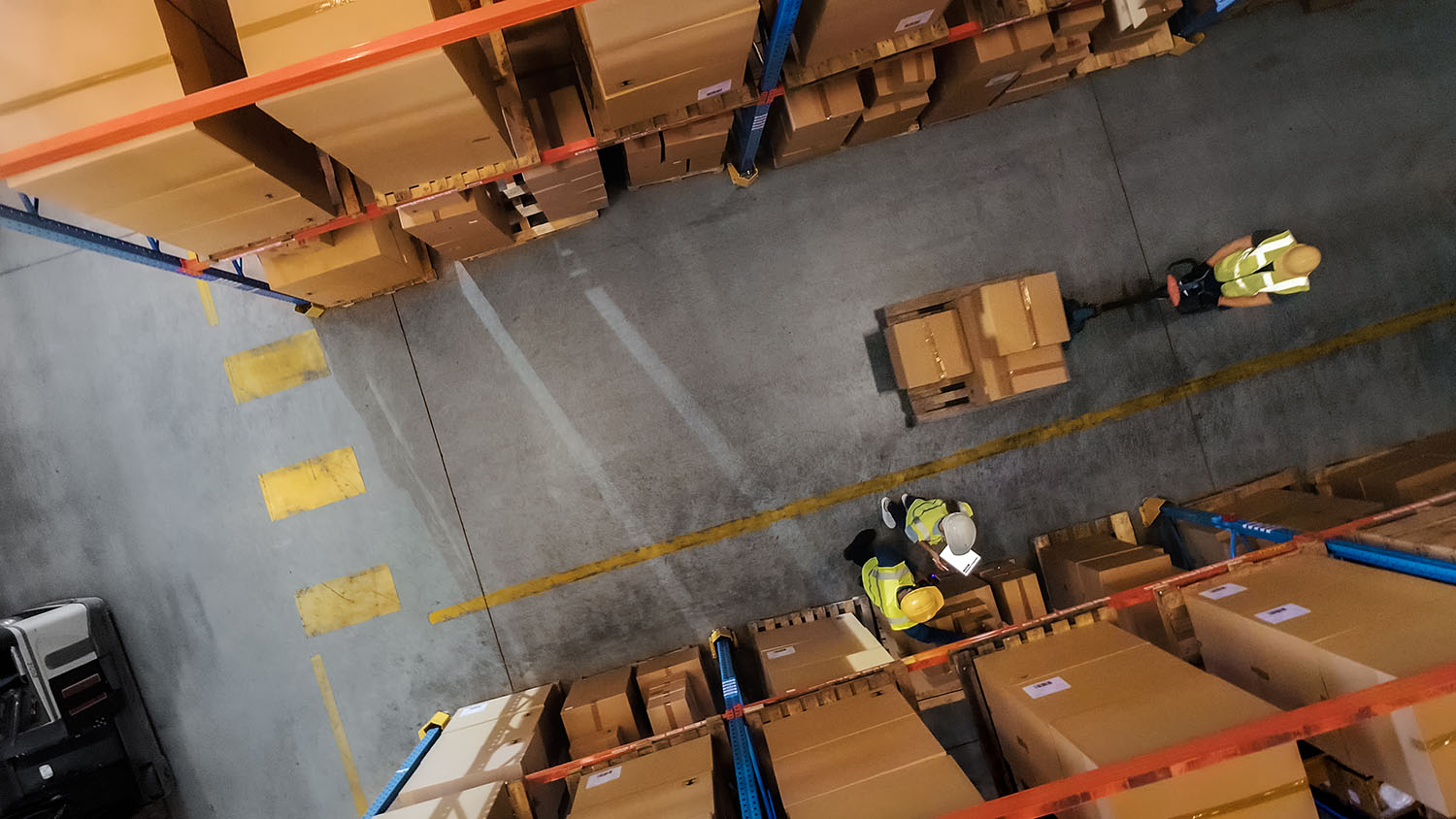Overnight shipping sounds simple on paper. A client promises fast delivery, a carrier provides the service, and the package reaches the customer the next day. But for the 3PL charged with making good on the promise, it means a warehouse team racing to meet the deadline with no room for error.
As soon as an order comes in, that team has a short window to confirm inventory, pick the right items, pack, print the label, and get the shipment to the dock before the carrier’s cutoff time. Every step has to be fast and accurate at the same time the warehouse is handling the same circus act for the 3PL’s other clients as well.
In 2023, 67% of consumers experienced a delivery issue within the three months surveyed, and 68% took action against the retailer or the delivery provider. That means a single missed delivery window doesn’t just hurt your margins but risks losing the customer entirely.
This article breaks down what overnight shipping is, how much it costs, how it’s different from next-day shipping, and how 3PLs can meet delivery expectations without overwhelming their operations.
What Is Overnight Shipping?
For 3PLs, overnight shipping is a service that gets a package from their warehouse to the customer’s doorstep by the next business day. This delivery is often made by late morning or early afternoon.
It’s one of the fastest shipping methods available, but it’s often confused with similar terms. Here’s how they differ:
- Overnight shipping guarantees delivery by the next business day, usually by a set time like 10:30 AM or 12:00 PM
- Next-day shipping is a broader term. It may include delivery by the end of the next day, but it doesn’t always come with a time guarantee
- Two-day or expedited shipping takes longer and isn’t guaranteed to arrive the next day
Overnight shipping is more expensive because carriers prioritize it. For 3PLs, it also means tighter handoff windows and more pressure to move quickly once an order is received.
Why Overnight Shipping Is a Growing Requirement
For many direct-to-consumer (DTC) brands, fast shipping is the baseline. DTC brands are expected to offer next-day delivery because companies like Amazon have trained shoppers to expect it.
DTC Brands Are Feeling the Pressure
Fast shipping drives conversion and brand loyalty. It reduces cart abandonment and improves customer satisfaction. For many e-commerce brands, it’s a key part of their customer experience.
A 2023 consumer report by Shippo found that 62% of shoppers expect orders to arrive in under two business days, and 39% expect next-day delivery.
That Pressure Rolls Down to 3PLs
When clients make promises to their customers, it becomes the 3PL’s responsibility to deliver on them. If 3PLs can’t support overnight delivery consistently and at scale, their clients will look elsewhere.
That’s why meeting that service expectation isn’t optional anymore. 3PLs that fall short risk losing high-growth e-commerce brands to competitors who can move faster.
How Much Is Overnight Shipping: A Carrier Cost Comparison
Overnight shipping costs vary, but they follow a predictable structure. The final cost depends on four main factors:
- Carrier: Each major provider, FedEx, UPS, and USPS, uses its own pricing structure
- Weight: Heavier packages cost more
- Shipping zone: The farther the distance, the higher the rate
- Package dimensions: Carriers apply dimensional weight pricing for large but lightweight shipments
For 3PLs offering fulfillment, these variables affect every shipment. If clients expect real-time rate shopping, your team needs to compare across carriers quickly and accurately.
Here’s a breakdown of FedEx overnight shipping cost, along with UPS and USPS options, including their estimated delivery times:
| Carrier | Service Name | Starting Rate | Delivery Time |
| FedEx | First Overnight | $68.04 | Next business day by 8:00 AM |
| Priority Overnight | $37.04 | Next business day by 10:30 AM | |
| Standard Overnight | $33.87 | Next business day by 5:00 PM | |
| UPS | Next Day Air Early | $72.42 | Next business day by 8:00 AM |
| Next Day Air | $42.42 | Next business day by 10:30 AM | |
| Next Day Air Saver | $38.78 | Next business day by 4:30 PM | |
| USPS | Priority Mail Express | $27.60 | 1–3 business days (often next-day by 6 PM) |
| Priority Mail | $7.99 | 2–3 days business days |
Note: Rates are based on standard packages and may vary depending on weight, dimensions, and destination zones.
Cutoff Times & Operational Pressures for 3PLs
Overnight shipping only works if the order leaves the facility on time. Each carrier sets a daily cutoff for overnight delivery. If the package isn’t scanned before that time, it won’t reach the customer the next day, no matter what shipping method you chose.
Here are typical cutoff windows for each carrier:
| Carrier | Service | Typical Cutoff Time |
| FedEx | Priority, First, & Standard Overnight | 3:00-5:00 PM (local time) |
| UPS | Next Day Air, Air Early, & Air Saver | 2:45-6:00 PM (local time) |
| USPS | Priority Mail & Mail Express | 12:00-6:00 PM (local time) |
*Note: Cutoff times can vary by location and facility. Always confirm with your local carrier representative.
For 3PLs, these deadlines create real pressure. If a client submits an order at 2:45 PM, your team may have less than an hour to process it. The order needs to be picked, packed, labeled, verified, and handed off before the truck arrives. Any delay in that chain can result in a missed service-level agreement (SLA).
This is where a warehouse management system (WMS) like Da Vinci helps. It prioritizes urgent orders, sends real-time pick instructions, auto-generates compliant labels, and flags orders that are at risk of missing the cutoff. With these workflows in place, your team can move faster, make fewer mistakes, and avoid burnout on every overnight shipment.
5 Operational Challenges of Overnight Shipping for 3PL
Supporting overnight delivery at scale introduces a new level of complexity across people, systems, and processes.
Here are five challenges 3PLs face every day when clients expect next-day fulfillment.
Unpredictable Order Timing
Even when orders flow directly from your client’s e-commerce platform or order management system into your operation, you never can predict how many are placed early in the day versus just before the cutoff.
When your clients allow late-day or next-day delivery options, your team can end up with an extremely narrow window to pick, pack, and ship items. The unpredictability of late-breaking orders makes it hard to plan labor, prioritize tasks, and keep operations running smoothly across accounts on a daily basis.
The key is early visibility, and that’s where most 3PLs struggle without a proper warehouse management system (WMS). A solution like Da Vinci flags time-sensitive orders the moment they’re received, based on carrier cutoff times, SLAs, and shipping methods. With these insights, your team can act faster, reduce errors, and avoid last-minute chaos.
Inefficient Slotting Slows Down Fast Orders
When high-priority orders involve SKUs stored far from pack-out or mixed with slower movers, your team wastes precious time walking and searching, delays that add up fast when you’re racing toward a carrier cutoff. And because customers can request overnight delivery on any item, it’s hard to pre-slot just a subset of SKUs for speed.
The solution lies in dynamic slotting and intelligent wave planning. A WMS like Da Vinci helps you re-sequence pick paths and group urgent orders so pickers can move efficiently, even when SKUs are scattered across zones. This makes sure your team hits tight timelines without overhauling your entire layout.
Inventory Gaps Stop Orders Mid-Stream
If a picker arrives at a bin and the product isn’t there, the entire order stalls. There’s no time to locate missing units or wait for a recount. That kind of delay is especially risky with overnight shipments, where even a short hold can cause a missed delivery window.
Accurate inventory starts with strong receiving and regular cycle counts. A 3PL software keeps inventory synced across systems in real time and flags discrepancies early, so teams work with data they can trust. When stock levels match what’s on the shelf, your team can move faster without second-guessing every pick.
Manual Workflows Increase the Risk of Error
When time is limited, even small mistakes can cause big problems. Picking the wrong item, entering an incorrect address, or forgetting to scan a package can turn a guaranteed overnight delivery into a missed deadline and a disappointed customer. With next-day shipping, there is no time to recover or resend the order.
To avoid this, 3PLs need simple but effective quality controls. Pack-out verification helps your team confirm that the right items and quantities are being packed before the order is sealed. This is usually done by scanning barcodes and matching them against the order in your system. Address validation checks the shipping address against official postal databases to catch typos or formatting errors before the label is printed.
“Address validation dramatically reduces the risk of delivery errors caused by incorrect addresses. Confirming the validity and completeness of addresses before dispatch ensures shipments arrive at the right locations on the first attempt.” — Supply & Demand Chain Executive
Carrier Requirements Are Easy to Misapply
Different carriers have different rules for overnight delivery, including label formats, service codes, weight thresholds, and packaging types. When your team has to switch between systems or guess the correct option, mistakes happen. And one wrong label can downgrade a shipment or cause it to miss the delivery window entirely.
You can reduce this risk by setting up carrier rules by client and linking them to the right services ahead of time. Da Vinci simplifies this by applying the correct carrier, service level, and label automatically based on order details. This way, your team never has to choose manually or second-guess what’s required.
Bottom Line: Simplify Overnight Shipping with Da Vinci’s WMS
Meeting overnight shipping expectations requires visibility, control, and systems that can handle volume without creating chaos. 3PLs need to process high-priority orders fast, fulfill them accurately, and hand them off before the cutoff. That takes coordination, and that’s where WMS makes all the difference.
Da Vinci helps 3PLs manage overnight fulfillment with real-time inventory accuracy, automated order prioritization, and carrier-specific shipping logic that applies the right labels and services. Book a free demo today.



